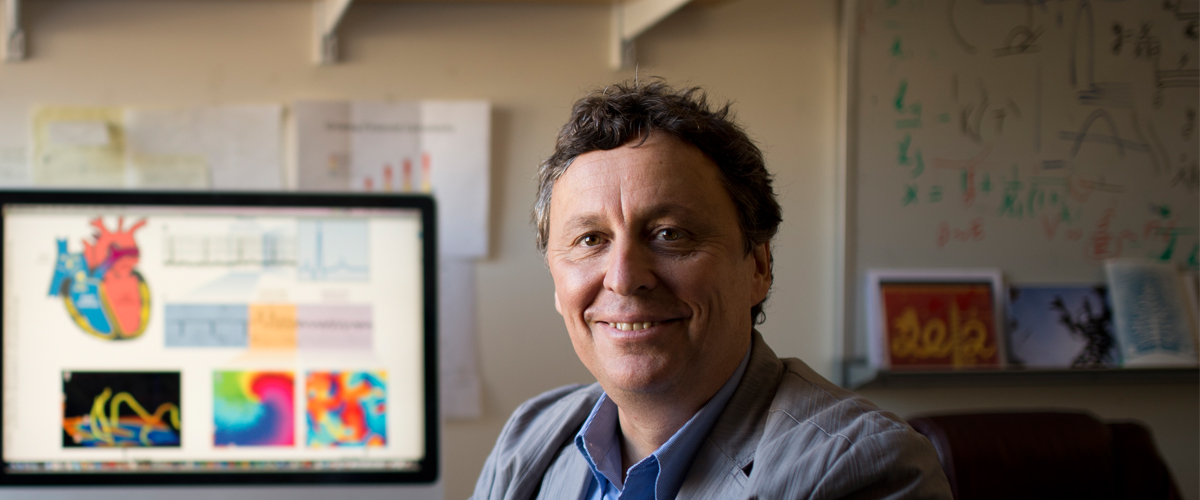by Angela Herring
Sudden cardiac arrest is the leading cause of death in the industrialized world. However, it’s not well understood and is challenging to both predict and effectively prevent, according to Alain Karma, Arts and Sciences Distinguished Professor in the Department of Physics.
“The drugs that reduce the risk for sudden cardiac death have not been successful,” said Karma, who is the director of Northeastern’s Center for Interdisciplinary Research on Complex Systems. He attributed the drugs’ failure to their design, noting that they are created without consideration of the entire cardiac biological system.
Karma wants to change that. Backed by $1.2 million in funding from the National Institutes of Health, he and his colleagues at Brown University will study how a particular class of gene mutations in humans significantly increases the risk of sudden cardiac arrest by disturbing the heart’s electrical signaling. The work, Karma said, “will help us understand what kind of interventions we can use to move the heart system from an unsafe zone to a safe zone.”
The heart, he explained, is a complex electrical circuit. The key molecular components of this circuitry are nanoscale proteins embedded in the membrane of each cardiac cell that act as channels for the flow of charged particles such as sodium, potassium, and calcium ions. This flow generates an electrical current across the cell membrane that is passed from cell to cell, causing each to contract and relax in a rhythmical fashion.
During a normal heartbeat the electrical signal propagates over the organ like a wave, Karma explained. It first causes the right and left atria to contract nearly simultaneously, followed by the right and left ventricles, respectively.
But during sudden cardiac arrest, that smooth rhythm is disrupted. The electrical wave takes the shape of a spiral, reentering the same area of cardiac tissue again and again. To Karma, the signals look like “little electrical tornados.”
This spiral wave is triggered by an asynchronous beat at just the right moment. Some sudden cardiac arrest patients have a gene mutation—called the long QT gene—that causes certain ion channels to cease functioning properly, thereby elongating the heartbeat.
“While most healthy people will have a few premature beats, they are usually benign,” Karma said, “but in the setting of the long QT syndrome, those premature beats can become much more frequent and cause the sudden onset of lethal cardiac arrhythmias.”
Karma’s team is using computational modeling to predict electrical activity in the heart across a hierarchy of organizational levels. “We model it all the way from the single ion channel to the organ scale,” he said. He hopes this will elucidate how the poorly functioning ion channels cause more of those little electrical tornadoes and, by extension, increased risk for sudden cardiac death.
The problem is that having the long QT syndrome does not necessarily mean you will suffer an unexpected heart attack. According to Karma, that one gene mutation causes a system-wide remodeling, which depends on a complex array of factors unique to each individual.
“Ultimately the therapy may have to be patient-specific because the remodeling of the system can vary from patient to patient,” he explained, adding that his hope is for the computational modeling approach to pave the way for personalized therapies for cardiovascular diseases.
Originally published in news@Northeastern on October 25, 2013

